The Complete Guide: The 8 Gates of The Seoul Fortress Wall
Last Updated on April 4, 2024
The Seoul Fortress Wall runs 18.6 kilometers around the center of the city of Seoul and sits up high on the mountains of Bugaksan, Naksan, Namsan and Inwangsan and sits down low running through Dongdaemun too.
Initially built in 1396, it took 98 days and just over 197,000 people helped in the construction. The Seoul Fortress Wall is one of those sites that most tourists don’t directly seek out but will run into at some point while they’re visiting Seoul, Korea.
On the other hand, people who become residents of Seoul for a period of time might make it a mission to walk the entire fortress wall during their time living in Seoul.
The wall itself is one of the best places to take a walk or hike when visiting as the paths are kept clean of debris and you can never really get lost and are always fairly close to a subway station since it circles the center of the city. Basically, don’t miss out on this must-see spot in Seoul that makes for a great place to hike in Seoul too.

Learn more about the Seoul Fortress Wall:
- A Brief History of the Seoul Fortress Wall
- The Gates of the Seoul Fortress Wall
- Map of the Seoul Fortress Wall
- Recommended Courses
(This page contains affiliate links. That means if you click on them and purchase something, I will get a percentage of the transaction at no cost to you. Thanks for the support!)
A Brief History of the Seoul Fortress Wall
The wall was divided into 97 sections and people from different prefectures were assigned to each section so that everyone helped out. The parts of the wall built on the mountains were formed with stones and the parts on lower ground were formed with earth though in 1402, the earthen sections were reconstructed with stone as well. The wall stood for the next 300 years before another reconstruction took place in 1704 to rebuild parts of the wall that had collapsed over time.
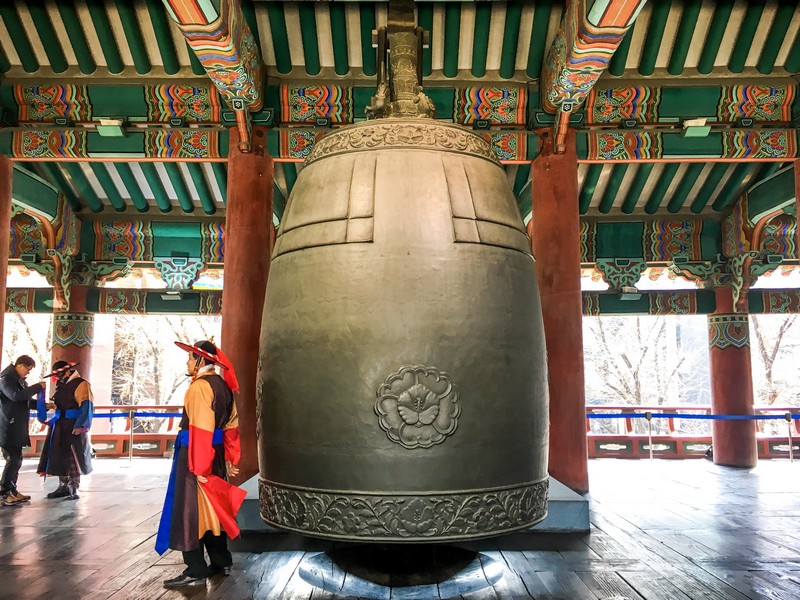
During the Japanese colonization period in Korea, Japanese overseers deliberately dismantled a number of gates including Donuimun and Souimun and Gwanghuimun and Hyehwamun Gates were damaged. Work to restore the gates was purposefully neglected until after the Japanese left and the Korean government could once again reconstruct the wall.
As of 2014, 70%, or 12.8 kilometers of the Seoul Fortress Wall had been restored or reconstructed and Sukjeongmun, Gwanghuimun, and Hyehwamun were rebuilt. While the wall is interesting to walk along and provides a great walking path that is easily navigable for anyone that wants to take a walk or hike but doesn’t want to get lost, the gates are what provide the truly beautiful sights along the way.
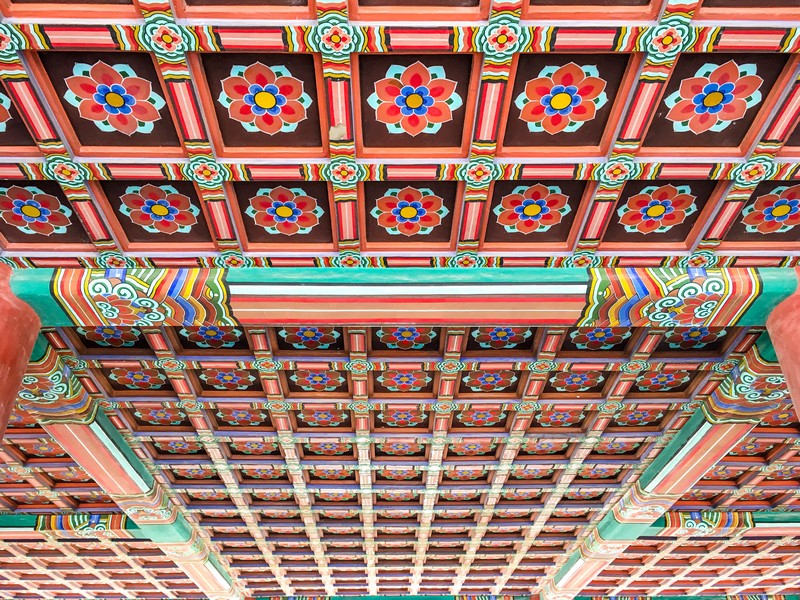
Along the wall were four main gates and four auxiliary gates. The gates were opened and closed each day to let people in and out. In the morning, the Bosingak Belfry bell was rung thirty-three times to signify that the gates were opening and in the evening, the bell was run twenty-eight times to announce the closing.
On a related note, you can still visit the Bosingak Belfry just outside of Jonggak subway station, exit 4 and actually take part in ringing the bell yourself every day except Mondays. From 11:00am to 12:20pm, there is a changing of the guard ceremony and then visitors can go up the steps to the second floor of the bell tower to see the massive bell in person. Adorn the traditional outfits available and then ring the bell.
The Gates of the Seoul Fortress Wall
Here are the gates along the Seoul Fortress Wall and the information on what you can find at each site today whether it’s been rebuilt or not.
Sungnyemun Gate (숭례문) (Namdaemun)
Also known as Namdaemun, this is the South Main Gate of the wall. It was rebuilt in 1448 and 1479 after the original build in 1395 but most recently, after an arson attack by an unhappy citizen, it was rebuilt in 2013 after a five year restoration project. The rebuild actually allowed for the gate to be built closer to its original form and connected sections of the Fortress Wall on either side.
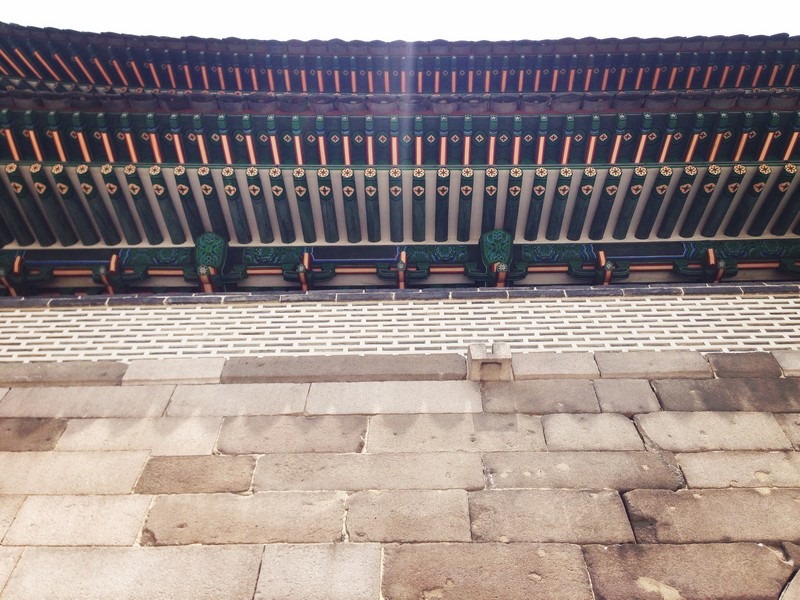
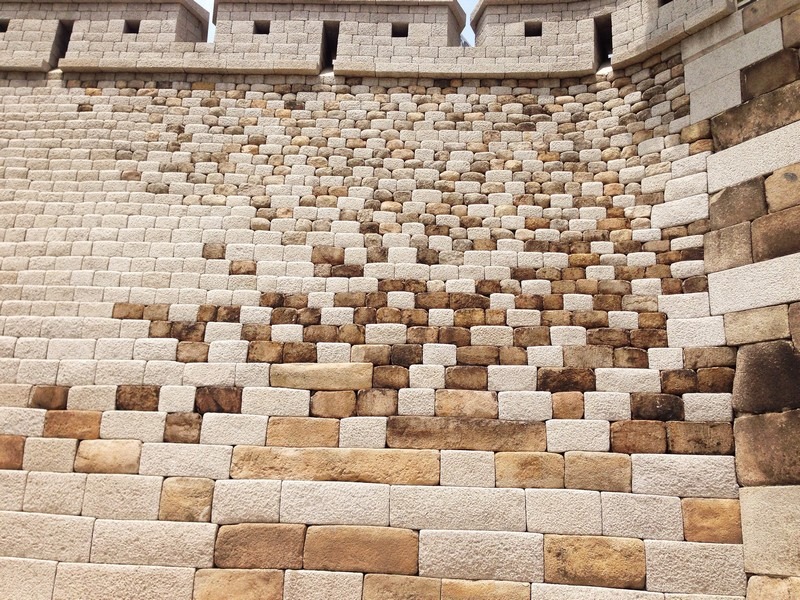
The gate is in the center of the city and in walking distance of spots like Deoksugung Palace and Seoul City Hall. Translated, the name of this gate means “Exalted Ceremonies Gate” which makes sense as it served as the location where the King would greet and send off envoys to China. This gate also represents fire as it is the southern most and during times of drought, the gate would be closed while the northernmost, representing water, would be opened so that the water would (hopefully) come.
The southern gate wouldn’t be reopened again until the water came. During the Japanese colonization, streetcar tracks were placed through the gate so that all of the traditional functions of the gate ceased and the public wasn’t even allowed to go near the gate for some time as well. Now however, it has been opened to the public once again and a nice little park sits on the grounds. It’s a great photo-op in the center of the city and one of the easiest gates for tourists and visitors to find.
- Address: 40 Sejongdae-ro, Jung-gu, Seoul (서울 중구 세종대로 40)
- Directions: Walk straight out of Seoul Subway station exit 4 and you’ll find the gate just up the block.
- Hours: Tuesday – Sunday: 9:00am ~ 6:00pm
- Admission: Free
Souimun Gate (소의문)
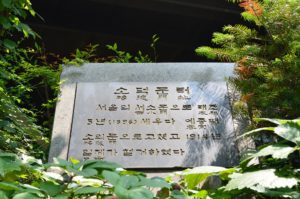
Meaning “Promotion of Justice Gate”, Souimun, also known as Seosomun, was once the southwest auxiliary gate, it was demolished in 1914 during the Japanese colonial period and was never restored. Now only a stone tablet sits where the gate once stood. While most of the gates have been restored to their former glory this one never saw that day. The plaque is a stark reminder that this city has seen wars numerous times in its long history.


Donuimun Gate (돈의문)
Donuimun Gate, translated to mean “Loyalty Gate” is now known as the “Invisible Gate”. Originally built in 1396, this was the West Main Gate however during the Japanese Occupation, a streetcar was installed and the gate dismantled and the pieces sold off. Now, a public art piece entitled “Invisible Gate” takes up the space where Donuimun Gate once stood though there are plans to resurrect the gate starting in 2022.
Another interesting addition to the area you’ll find if you head by to see Donuimun is the Donuimun Museum Village. Visit this retro area of Seoul that isn’t as old as the Hanok Villages, but historic nonetheless.
Changuimun Gate (창의문)
The northwest gate and one of the smaller ones, Changuimun sits between Inwangsan and Baegak Mountains. Meaning “Showing The Correct Thing Gate”, this is the only auxiliary gate that still has the tower intact and survived until present day, the oldest gatehouse of the small gates. The gate tower was destroyed in 1592 but was reconstructed in 1741.
This gate became known as the north gate because for a time Sukjeongmun Gate wasn’t used and so this auxiliary gate effectively became the gate through which everyone had to traverse back and forth. A wooden chicken sits in the rafters of this gate and it is said to sit there because a chicken is the nemesis of the centipede and the chicken would keep the evil spirits of the centipede at bay.
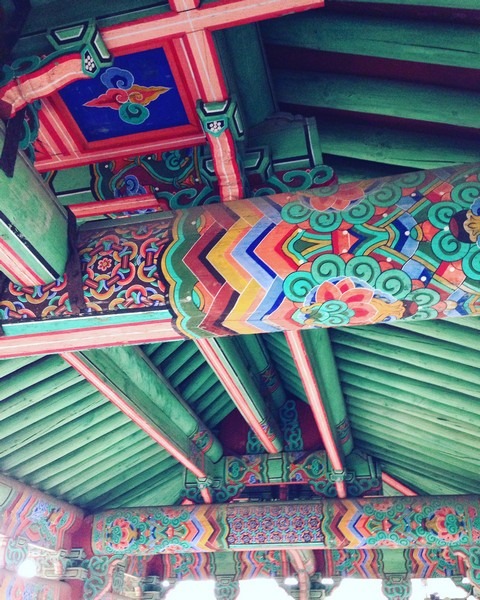
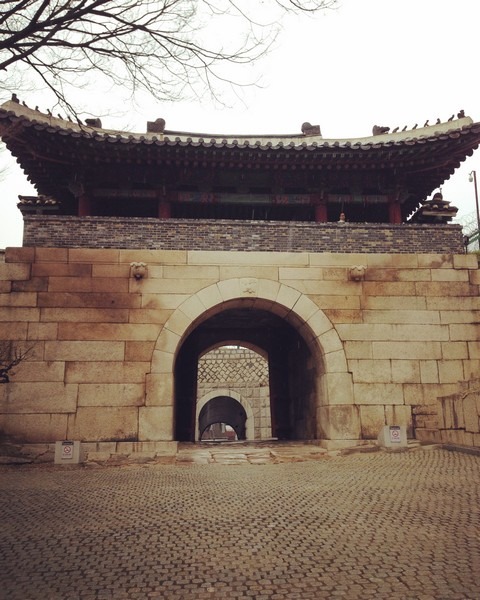
If you are walking along the wall and want to come down from here, you can easily hop on a bus on the main road just down from the gate that will take you to the west of Gyeongbokgung Palace where there are numerous restaurants, cafes and Tongin Market if you’re hungry after your hike.
- Address: 118 Changuimun-ro, Jongno-gu, Seoul (서울 종로구 창의문로 118)
- Directions: Gyeongbokgung Station, exit 3. Walk straight 146m to the second bus stop. Take Bus No. 1020, 7022 or 7212 and get off at Jahamun Pass.Yoon Dongju Literary Hall Bus Stop (5 bus stops). Changuimun Gate will be on the right up the short walkway.
- Hours: Open all year round every day, 24 hours a day
- Admission: Free
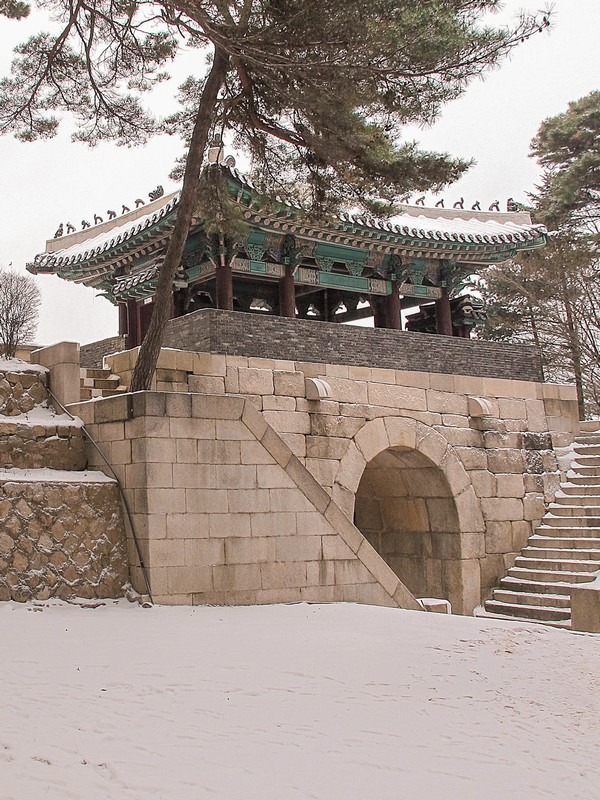
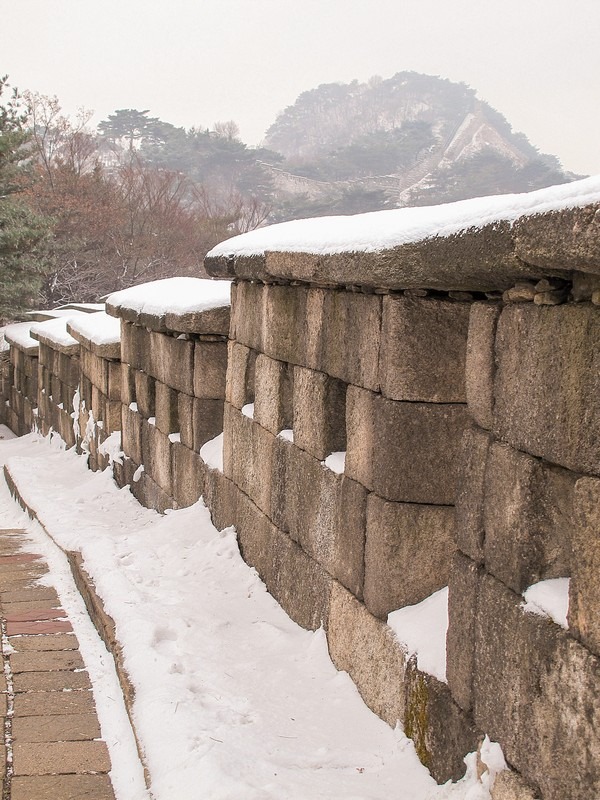
Sukjeongmun Gate (숙정문)
The northernmost gate, translated to mean “Rule Solemnly Gate” is the only gate that still has both sides connected to the fortress wall. This gate sits on the mountain just behind Gyeongbokgung Palace and Cheongwadae, or the Blue House, the former Korean President’s house. Originally, due to the location behind Gyeongbokgung Palace, this gate was rarely used except for formal occasions or during times of drought.
According to the five elements, this gate represents water and would be left open during droughts during the rule of the Joseon Dynasty in the hopes that water would come. Some scholars also say however, that “if women were to visit the gate three times before the first full moon, then all of the misfortune of the year could be avoided” and yet other scholars say that if the gate were left open, women in the fortress would succumb to lustful feelings so the gate should be left shut at all times. Currently, the gate is left open…
The section of the wall that this gate sits along was actually closed for 38 years due to an assassination attempt on the then president and wasn’t reopened to the public until 2006.
- Hours: 9:00am ~ 4:00pm
- Admission: Free
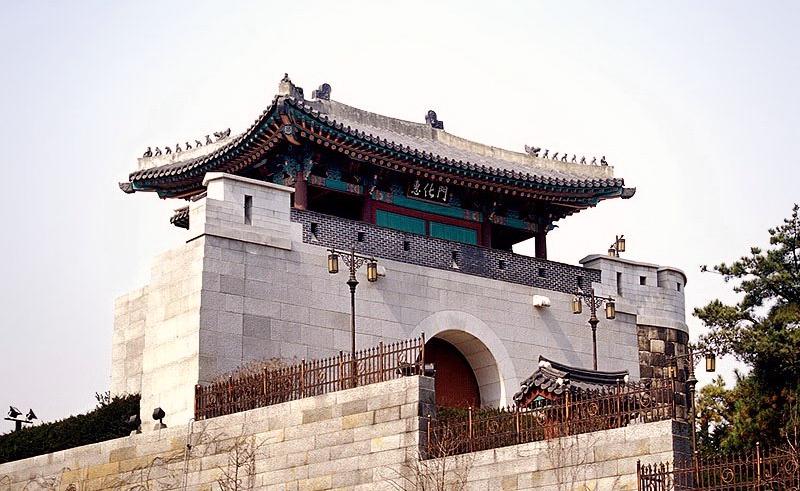
Hyehwamun Gate (혜화문)
Originally called Dongbukmun and translated to mean “Distribution of Wisdom Gate”, this was one of the four auxiliary gate built in the wall in 1396. The gate was renamed to it’s current name in 1511. The entire gate was destroyed in 1928 and wasn’t rebuilt, just a bit further north than the original position, until 1994. This gate is to the east of Changgyeonggung Palace and just north of Hyehwa where you can easily head up to find the Ihwa Mural Village.
- Address: 307 Changgyeonggung-ro, Jongno-gu, Seoul (서울 종로구 창경궁로 307)
- Directions: Hyehwa Station, exit 4. Cross the street and walk straight for 300m
- Hours: 9:00am ~ 6:00pm
- Admission: Free
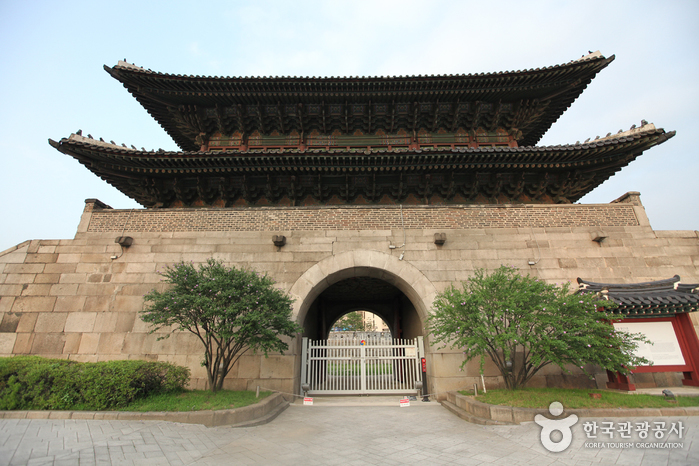
Heunginjimun Gate (흥인지문) (Dongdaemun)
This is National Treasure No. 1 for anyone trying to get all of those crossed off their bucket list. This is the East Main Gate of the wall and translates to mean “Rising Benevolence Gate” and like many of the gates, had to be rebuilt. It was rebuilt in 1896 but what is most interesting about this gate is the exterior wall, known as the Ongseong, that surrounds it.
While most of the gates were built on higher ground, this gate is set on low ground and thus needed extra protection. This is the only gate of the eight to have an Ongseong making this the most unique feature of this entrance.
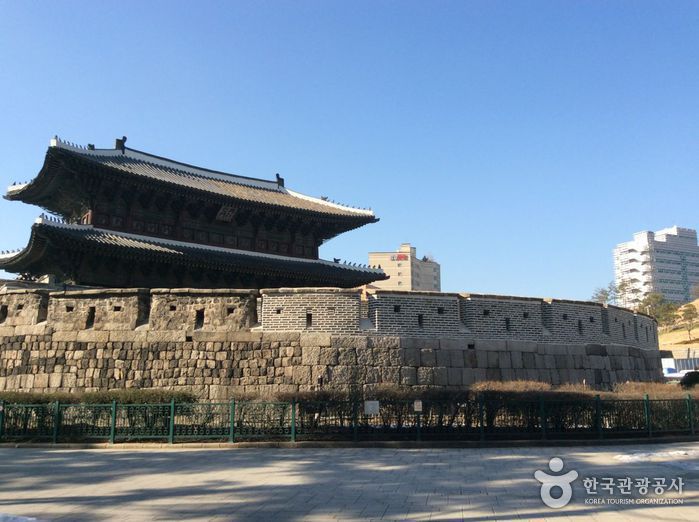
There is a ton to do around this gate. Shopping is by far the most popular thing to do with the numerous markets.
- Address: 288 Jong-ro, Jongno-gu, Seoul (서울 종로구 종로 288)
- Directions: Dongdaemun station, exit 6 or 7 will put you right where the gate is.
- Days/Hours: Open all year round every day, 24 hours a day
- Admission: Free
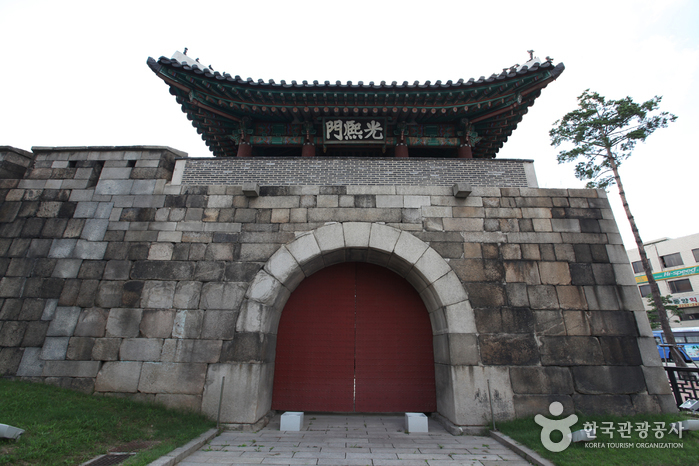
Gwanghuimun Gate (광희문)
One of the auxiliary gates, this sits on the southeast portion of the wall. It was destroyed during the Imjin War from 1592-1598 and was rebuilt in 1711 but was once again destroyed during the Korean War and was left to disrepair for some time before finally being rebuilt in 1975. This gate translates to mean “Bright Light Gate” but was also known as Sigumun or the “corpse gate” because funeral processions passed through this gate taking bodies to the east.
The wall that surrounded Seoul effectively became the boundary between life and death due to the fact that all bodies of the deceased, including kings and commoners, had to be buried outside of the wall.
- Address: 2-ga, Gwanghui-dong, Jung-gu, Seoul (서울 중구 광희동2가)
- Directions: Dongdaemun History & Culture Park Station (Seoul Subway Line 2 or 4), Exit 2. After exiting from the station, walk 76 m to cross the road. Cross the two roads looking at CU Sindang branch in front. Continue walking straight for 16m.
- Admission: Free
Map of the Seoul Fortress Wall
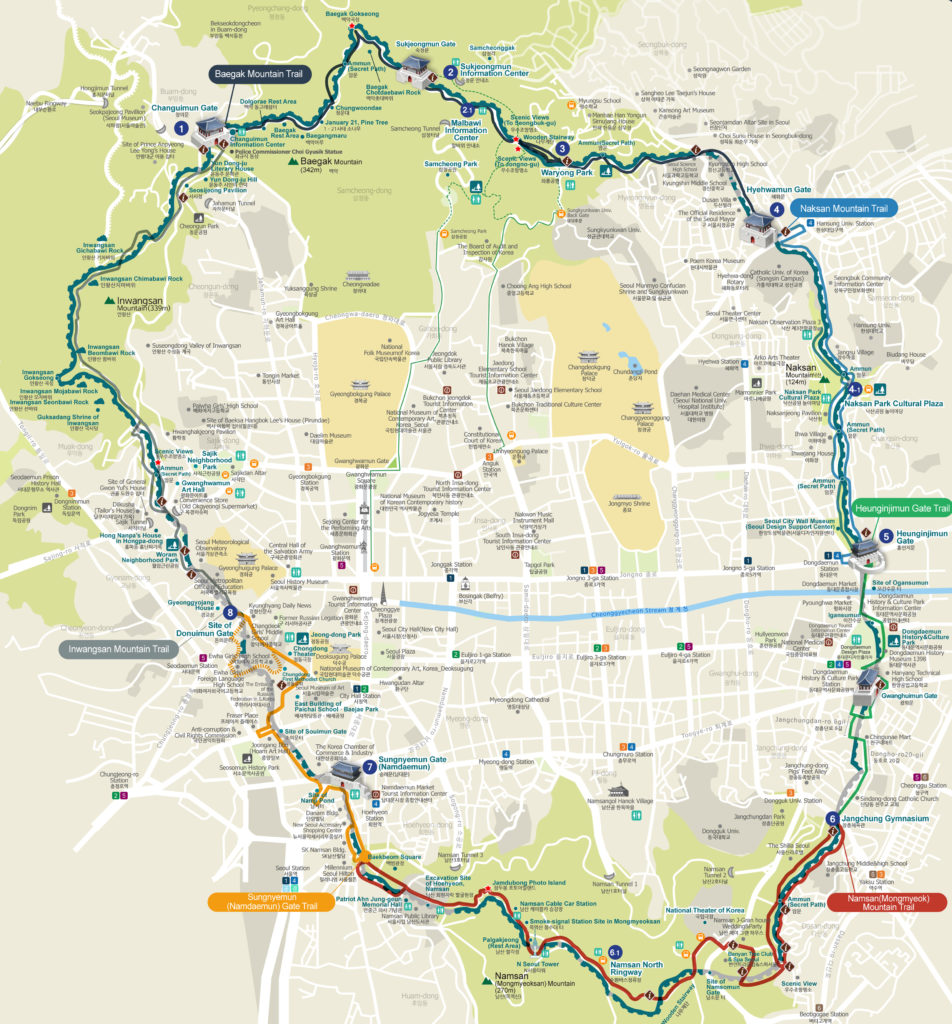
Recommended Courses
The Seoul City Government has put together their recommended courses if you want to do the entire Seoul Fortress Wall hike, also called the Seoul City Wall Trail. The course is broken up into 6 parts as follows.
Namsan Mountain Trail
- Section: Jangchung Gymnasium ~ Baekbeom Square
- Distance: 4.2km
- Duration: About 3 hours
- Opening hours: Namsan – 24 hours
- Tip: Visitors are advised to check the event schedule of Namsangol Hanok Village, many interesting events are held there.
This walking trail runs from the backstreets of Janchung Gymnasium to Namsan Park. In early Joseon, a national shrine and beacon platform were built near and at the top of Namsan (Mongmyeoksan, 270m). As Namsan was the center of the administrative district in Seoul, there is a stone marker inscribed with “the Central Point of Seoul” on the summit.
In the 1920’s, most the wall in the area were demolished to build the Joseon Shinto Shrine by the Japanese; but due to the preservation and restoration projects conducted since the 1970s and the Namsan recovering project carried out in the mid-1990s, most of the wall sections around Namsan have been restored to their original appearance.
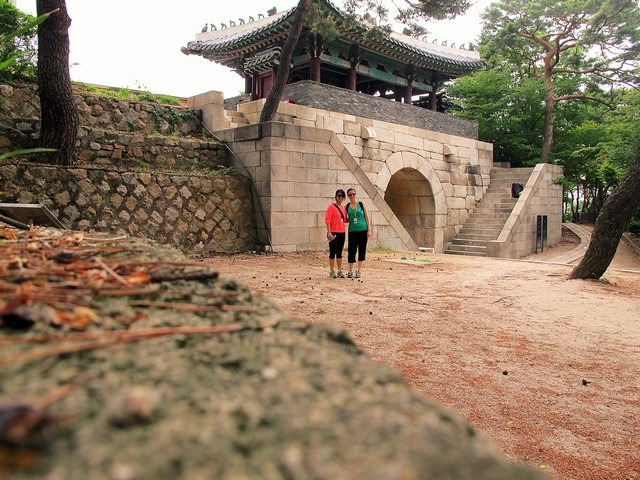
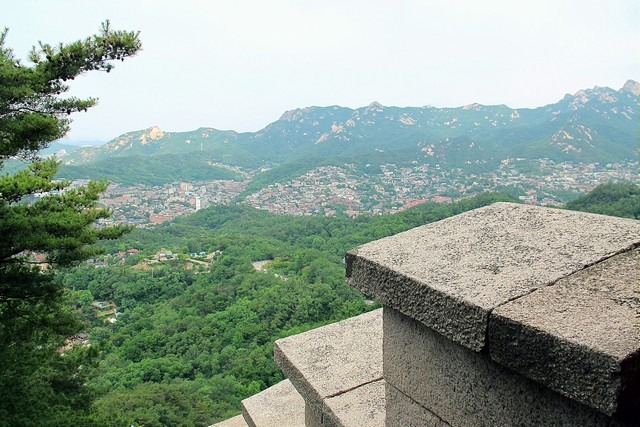
Sungnyemun Gate Trail
- Section: Baekbeom Square ~ Site of Donuimun Gate
- Distance: 1.8km
- Duration: About 1 hour
The Sungnyemun Gate Trail starts at Baekbeom Square, passes Sungnyemun and continues as far as the Site of Donuimun. Sungnyemun was the main entrance into the capital and, being in the south wall, was the closest to the Hangang River, and thus most of the people and goods going to the capital passed through this gate.
The first streetcar lines went into service in the capital in 1899, rendering the original function of Sungnyemun obsolete, and the wall sections on each side of Sungnyemun were removed in 1907 to improve the traffic flow. Thereafter, more of the wall was demolished when new buildings were constructed in the area of the gate, making it difficult to find any traces of the old wall.
Only two sites remain in this section were such remnants can be recovered. The lower part of the original wall remains along the alley that runs from the Korea Chamber Of Commerce & Industry to the Olive Tower, and the base of a fifty-meter wall section at Changdeok Girls’ Middle School comes from the old wall as well.
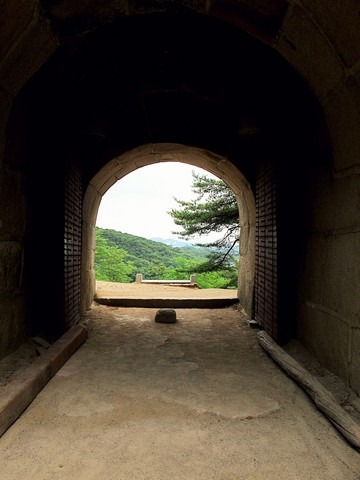
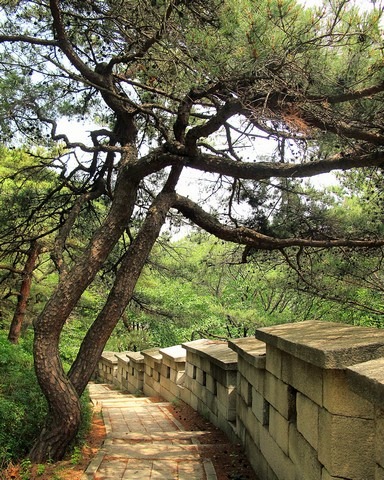
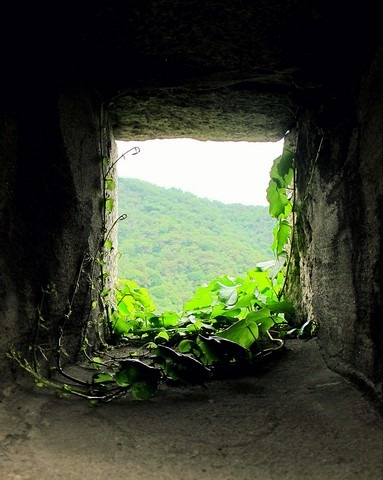
Inwangsan Mountain Trail
- Section: Site of Donuimun Gate ~ Changuimun Gate
- Distance: 4.0km
- Duration: About 2 hours 30 minutes
- Notice: As Inwangsan Mountain has many rocky sections, visitors take extra care, especially in winter.
This walking course runs from site of Donuimun to the Yoon Dong Ju Hill, via Inwangsan (339m), which is situated to the right of Seoul’s four inner mountains. Inwangsan is also known as a rocky mountain characterized by unusual rock formations including Chimabawi (Rock of women’s skirt), Seonbawi (Rock of meditating monk), and Gichabawi (Rock of train).
The name “Inwang” is a Buddhist term, and it is said that a Korean Buddhist monk named Muhak (1327~1405) once declared that if Inwangsan ever became one of the country’s principal mountains, Buddhism would flourish here. Access to the mountain was prohibited after a unit of the North Korean Special Forces infiltrated Seoul on 21 January 1968, and it was not reopened to the public until 1993.
Baegak Mountain Trail
- Section: Changuimun Gate ~ Hyehwamun Gate
- Distance: 4.7km
- Duration: About 3 hours
The Baegak Trail runs from Changuimun to Hyehwamun, and crosses Baegak (Bugaksan, 342m), which was the main mountain of Seoul’s four inner mountains in old Seoul according to geomantic theory and the highest one among them. After a unit of North Korean Special Forces infiltrated Seoul in 1968, public access to this area was limited for about forty years. It was finally reopened to the public in 2007.
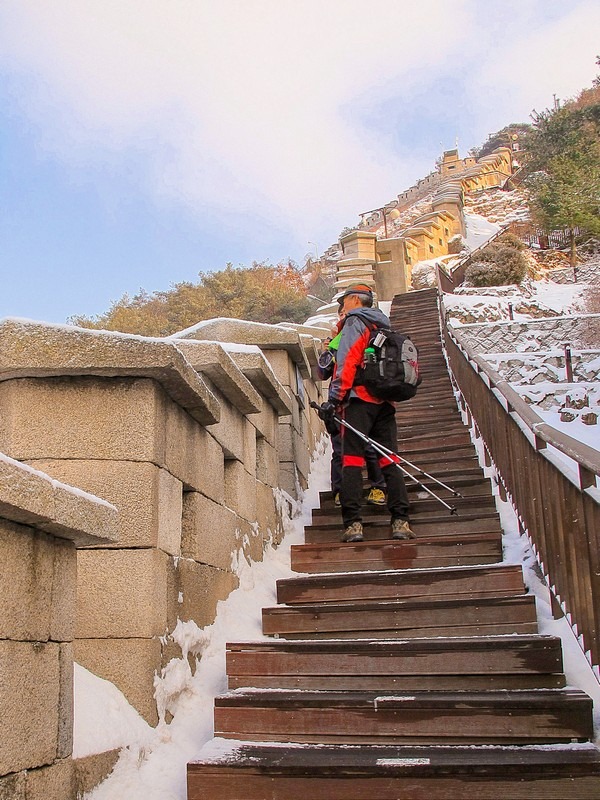
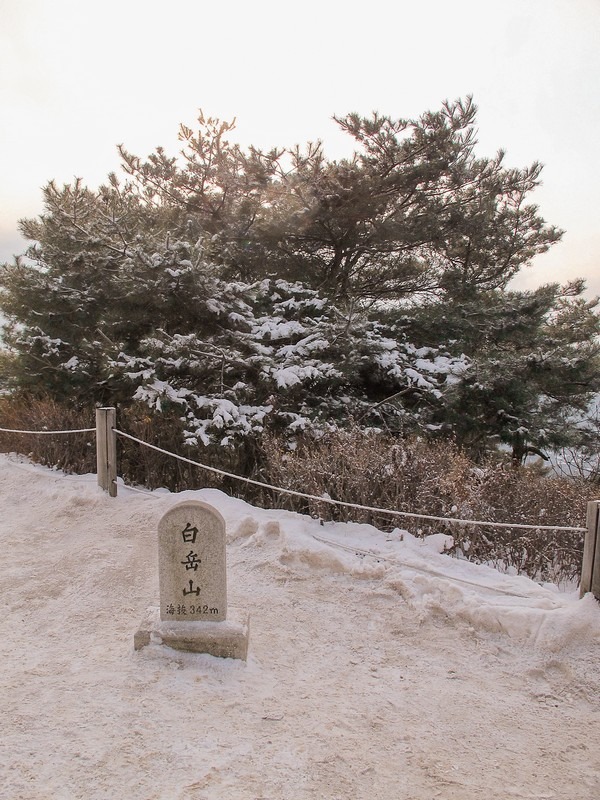
Naksan Mountain Trail
- Section: Hyehwamun Gate ~ Heunginjimun Gate
- Distance: 2.1km
- Duration: About 1 hour
This hiking trail runs from Hyehwamun to Heunginjimun, passing via Naksan (124m), the lowest mountain of Seoul’s four inner mountains. Naksan is also known as Naktasan (“Camel Mountain”) or Tarak, due to its resemblance to a camel’s humps. This course is relatively easy due to its gentle slope. Alert visitors will notice the different shapes of the stones depending on the time of construction of the wall, as they walk along the path behind the Catholic Univ. of Korea.
Heunginjimun Gate Trail
- Section: Heunginjimun Gate ~ Jangchung Gymnasium
- Distance: 1.8km
- Duration: About 1 hour
The stretch of wall around Heunginjimun is on the lowest ground of the entire wall. Thus, Ogansumun and Igansumun water gates (The water gates consisted of five arched and two arched gates) were built here to drain water from the city into the streams outside the wall.
After liberation, the streets in the area were widened and new homes were built. All this construction activity caused most of the main wall structure to be removed during the past century, but now Igansumun water gate is being rebuilt on its original site, and the foundation remnants of Hadogam have been moved inside Dongdaemun History & Culture Park for public display. People who wish to visit this part of Hanyangdoseong may also stop in Dongdaemun Design Plaza.
Did you like this post? Pin It!
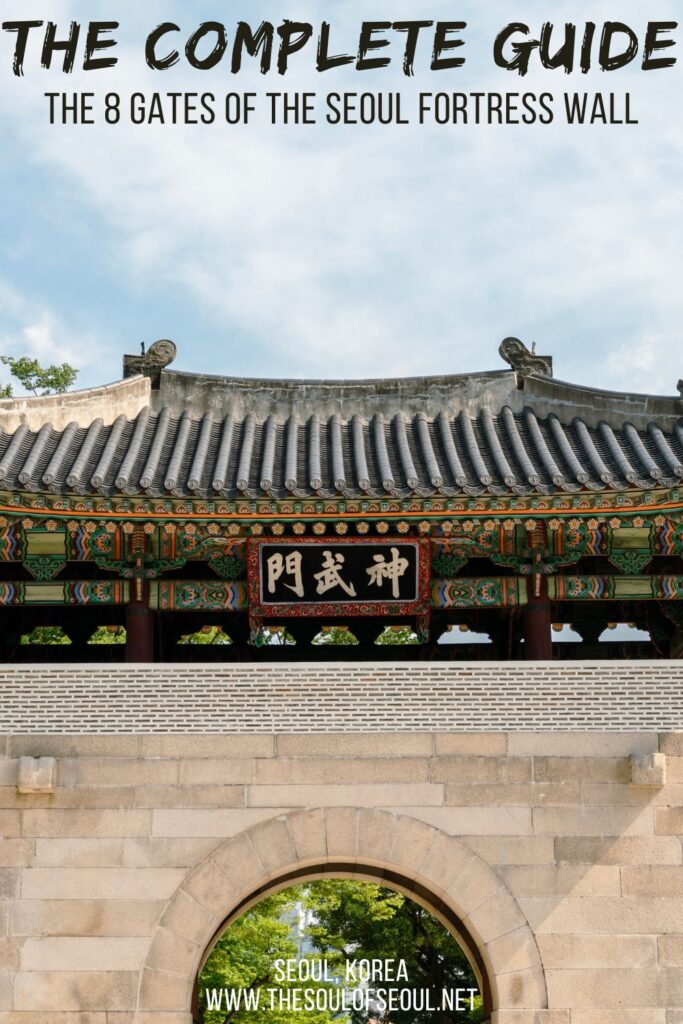
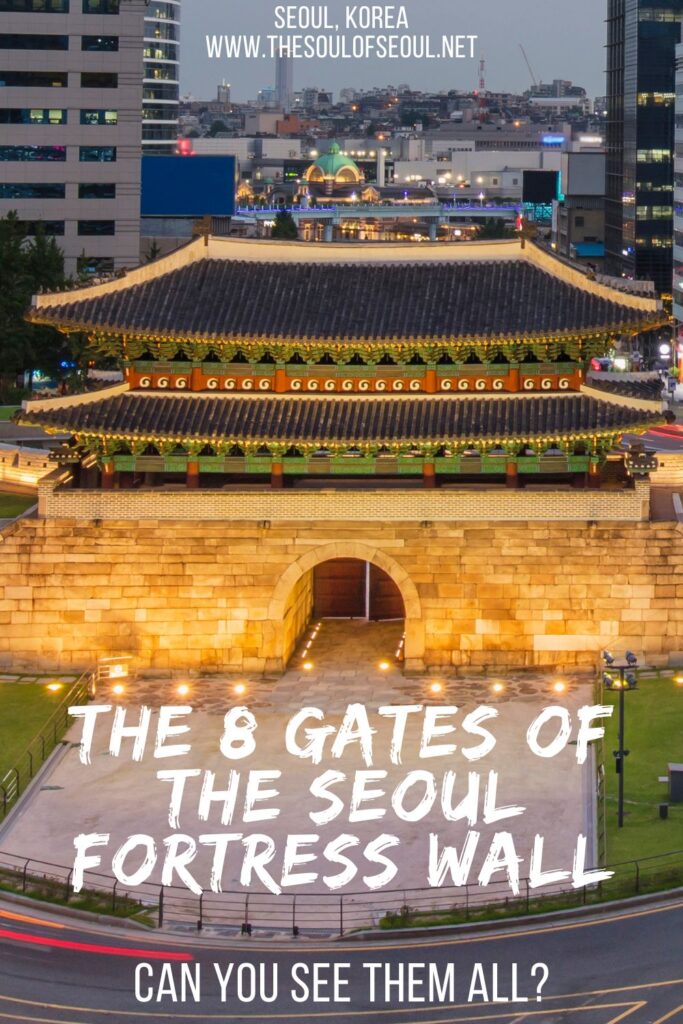
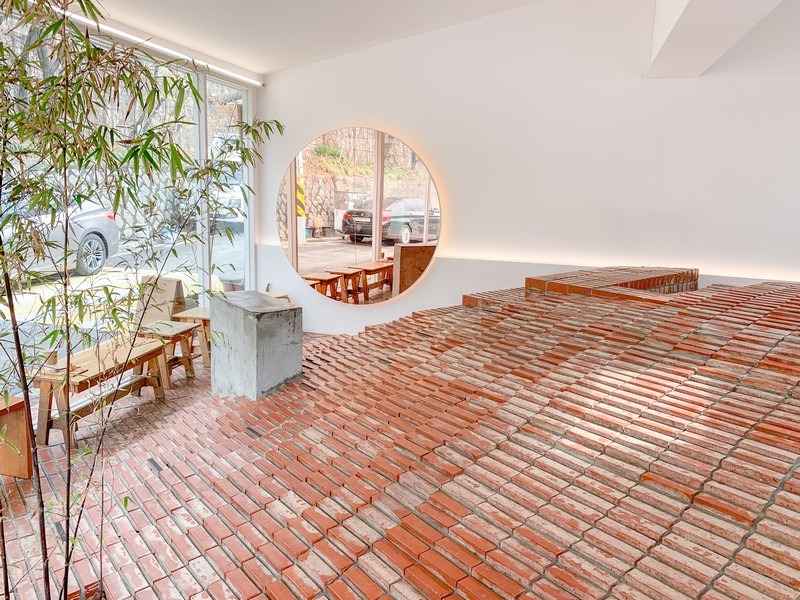
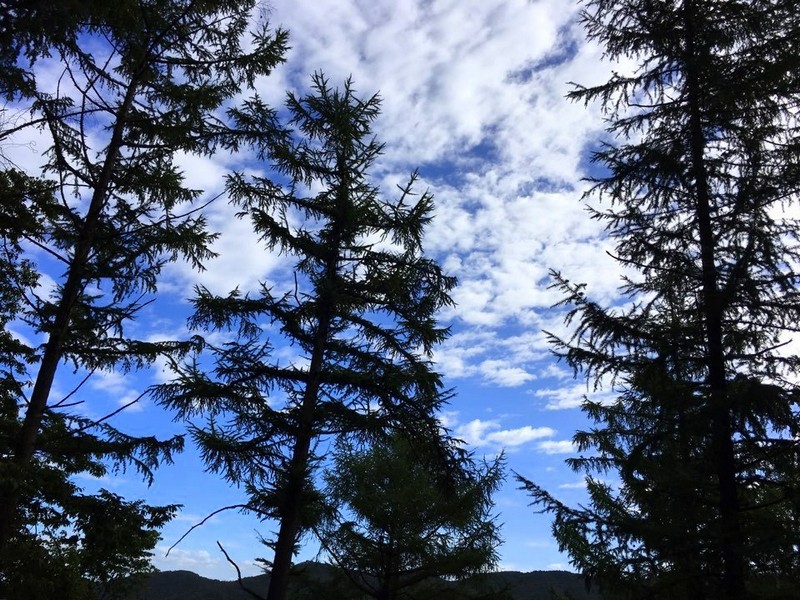
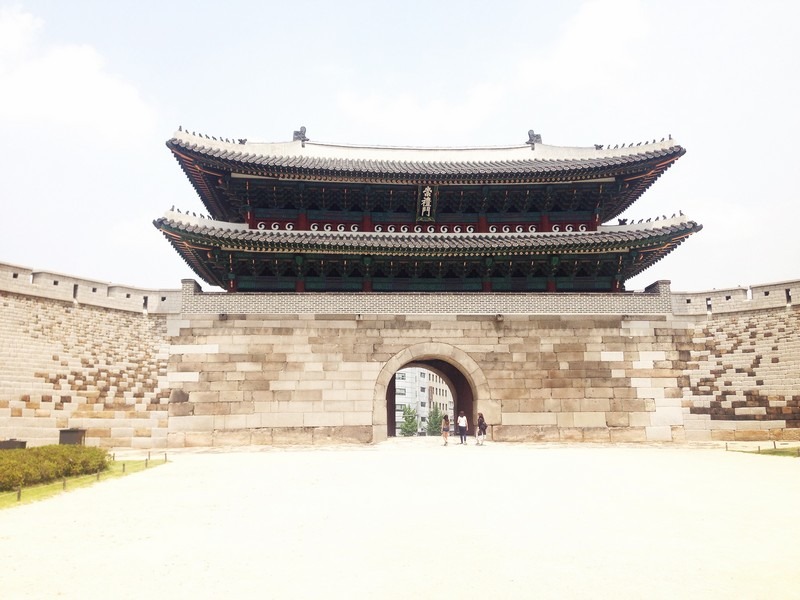
3 Comments
M Putte
Hi Hallie,
Very happy to have found this useful page/website!
I was wondering if you could suggest which part of the City Wall to walk in July. I’m tossing up between the Baegak Trail (i love the idea of all the stairs) but am wondering if the Naksan Trail (combined with Ihwa Mural village) might not be a better option in the heat in July.
Does it make a difference which way you walk the Baegak trail or is it just as tough both ways?
Thanks Carole for the tip about the app too.
Hallie Bradley
I like doing the Baegak Trail from east to west so the hike is more mountain trails up and stairs down. But my Korean friends like the stairs up and mountain trail down so I guess it’s up to preference. But July can be mighty hot and humid and the good thing about the Naksan Trail is that you can stop off in the mural village and go to a cafe to cool off and get a drink and then get right back on the wall to continue down as well. Maybe wait until you arrive and see how the weather is.
Carole Williams
Hi Hallie! I was just in Seoul for a week. Before I went, I read your whole site and I relied on your excellent advice. My favorite part was my gate-viewing and walking along the fortress trail. I saw all the gates and walked approx 80% of the trail? Now that I am reviewing your advice, I see I will have to return if/when they rebuild Donuimun. If anyone goes, they should get the Seoul City Wall app. The Map/Course showed me where I was once I was on the trail (it is a blank page when you’re in California! This made me think the app didn’t work). I am not a traveller, but a Tmoney card and the Naver Map app made exploring Seoul so easy; I enjoyed my trip very much. Thank you!